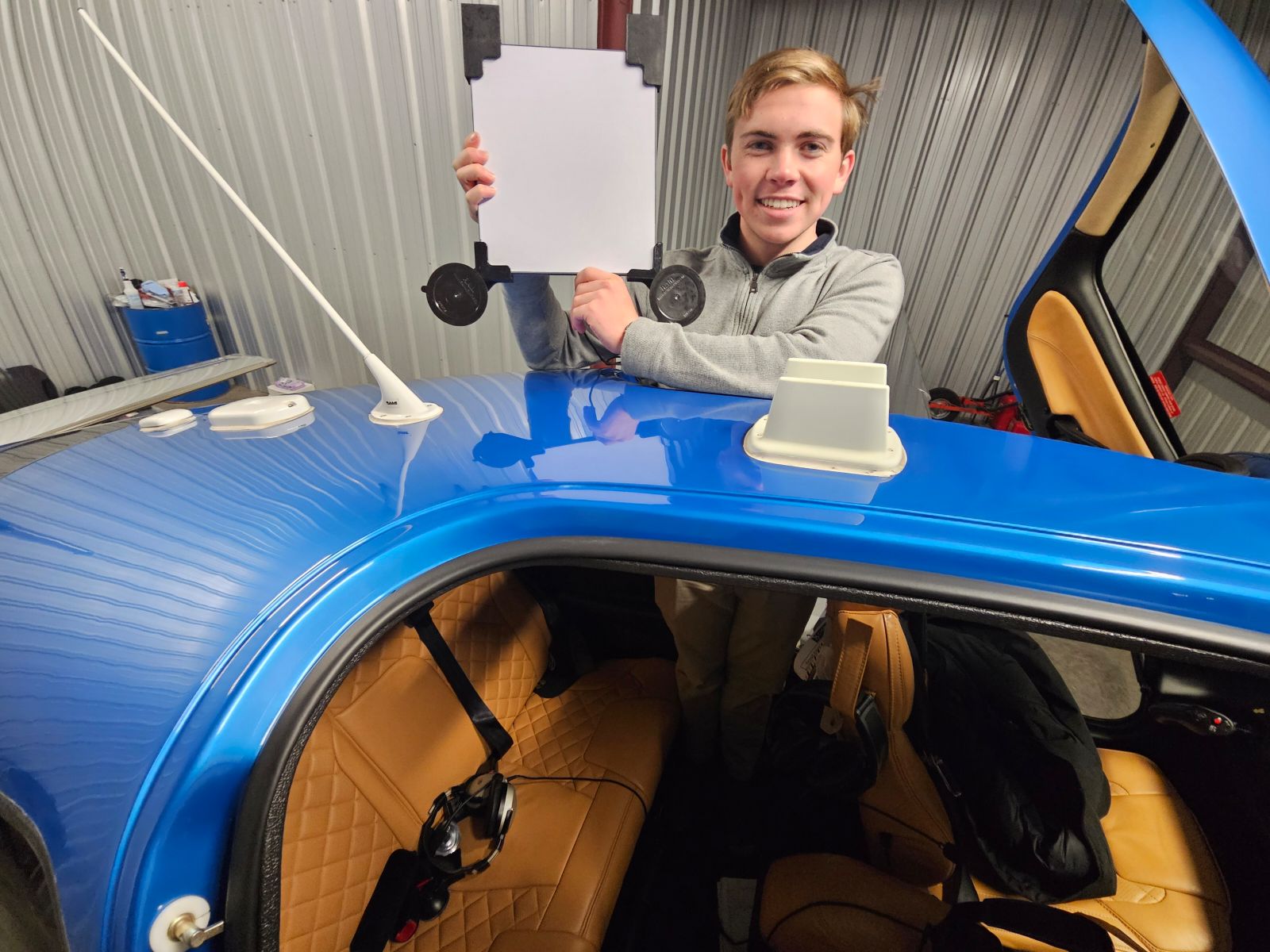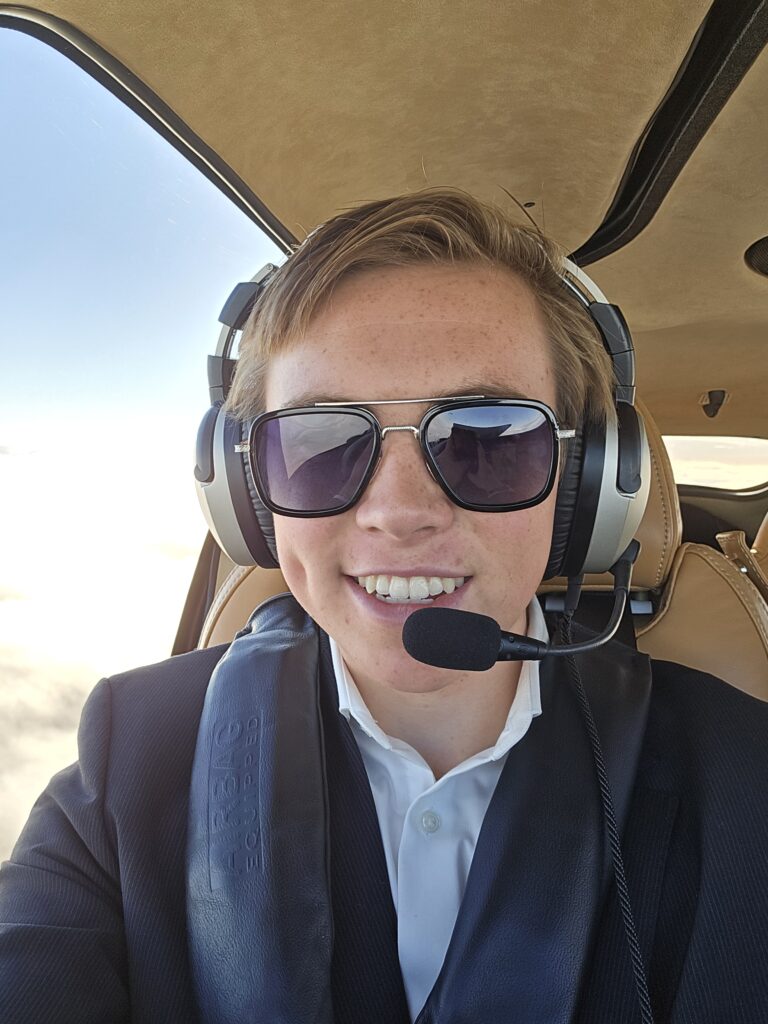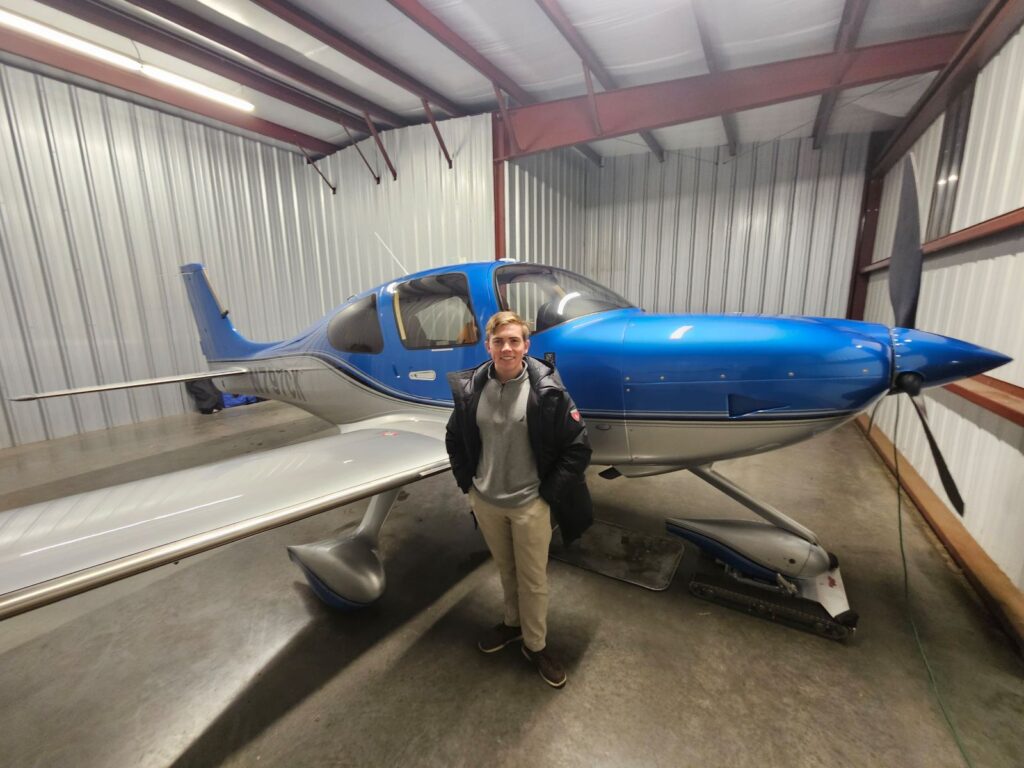First-Year Student Creates Innovative Solution for Aircraft Blind Takeoff

Mechanical engineering freshman Andrew Chapin heard a terrifying story that made him question the safety of private planes. When a family friend shared his experience of a blind takeoff, he wondered how something could happen to an ICON A5 light-sport aircraft.
“He was telling me about his plane that lands on water, but when he landed, he had a defrost issue and his plane was fogging up, making him unable to see during takeoff,” Chapin said.
The then-high school student was tasked with fixing the problem.
“He told me, ‘Hey, Drew. Come fix this.’ And so I did.”

That was the beginning of Chapin’s first design for what would become his own company, Aria Aerospace.
“I just took the measurements and designed a little part, and my friend told me I should sell them,” Chapin said.
This product — now marketed as the Aria Icon A5 Defrost System — uses a simple design that redirects the available air from the ventilation system to evaporate condensation for better visibility while flying. Its installation is even simpler, taking approximately five seconds to put into place, with no additional tools needed.
Chapin’s product seemed like a simple fix to what was a glaringly obvious problem for the aircraft, which led him to question what else he could design to make the flying experience better.
His second product was born soon after — the Aria Starlink, a mount that lets the user easily view and surf the internet while in the air. The idea itself is not brand new, but more common mounts are not as practical or user friendly.
“The problem was the Starlink, which lets us use the internet, had a mount in the front window that blocked the passenger’s view,” Chapin said. “Another issue was with the suction cups. They weren’t pressurized, so they get lost at around 8,000 feet.”
Chapin’s version of the Starlink mount uses advanced suction cups meant to handle extreme changes in pressure, leading to a more comfortable experience for passengers of private planes or aircraft. The quick and simple installation process makes it easy to move the device throughout the craft, customizing it to each user’s needs.
Although Chapin started his company at a young age, he has already made a national impact, selling both of his products to customers across the country.
…
Chapin grew up in Ridgefield, Washington, where he spent his time surrounded by engineers.
“My father is a mechanical engineer, and my grandfather is a farmer who does a lot of engineering and building his own equipment, so that’s what has always been ingrained in me.”
He first picked up welding tools at 6 years old, and by 10, he was working for his father’s business.
“I started basically running the welding division of the company when I was 14,” he said.
Because of his experience and talent in engineering, it was only natural for Chapin to pursue engineering himself once he got to college.
“A huge reason why I came to Cal Poly is because of the machine shops and the idea that you’re going to get completely hands on,” he said.
While his college experience is just beginning, Chapin has already made a name for himself on campus.
“I was elected president of the North and South Mountain dorms, and classes have been great so far!” he said. “The business is also doing a lot of sales, so I’m constantly working with production on the phone.”

The first-year student has already accomplished what many people strive for throughout their careers, but that doesn’t mean he’s slowed down.
“I’m only 18, and I want to maintain a problem-solving mindset and be able to apply that in the direction I feel can really make a big impact.”
Chapin entered Cal Poly with the mindset of becoming a changemaker. You can support his endeavors by visiting his website at ariaaerospace.com. You can also support incoming first-year students by giving to the Howard Caccia Student Technician Fund.
By Taylor Villanueva
